by Team Avista
Share
by Team Avista
Share

Public Relations used to rely solely on news outlets and press releases to get the word out about the companies they represented. While PR professionals still use press releases and connect with reports, social media has become the new frontier for connecting and communicating with company audiences.
Social media has become a critical resource for PR professionals, offering valuable insights into their target audience and amplifying the impact of PR campaigns, such as the Verinext website migration. For example, a press release announcing a new product can seamlessly translate into engaging social media content. While earned media coverage from news outlets can be shared across platforms to extend its reach. By creating heightened audience awareness and engagement, social media has become an indispensable component of modern PR strategies, enabling teams to maximize the effectiveness of their campaigns and drive meaningful connections with their audience.
Social Media’s Role in Public Relations
Social media’s role in PR is to increase coverage and engagement. Social does this through campaigns that hone in on social media’s ability to amplify the company’s message, expand its audience, add a personal touch and generate backlinks, boosting website traffic.
Amplify Your Message and Reach a Larger Audience
One perk of social media is how easy it is to reach a wider audience. One example of increasing audience through social media was the 2020 State Bicycle Co’s 12 Days of State Christmas campaign. The campaign collaborated with lateral brands and cycling influencers to expand each company and influencer’s reach and engagement with a new deal promoted for 12 days across all collaborator’s social platforms.

Another method that works well for rallying supporters or increasing visibility is social challenges. The Ice Bucket Challenge, started in 2014, raised $115 million for ALS research. It was circulated and tracked through the #IceBucketChallenge. Even now, 10 years later, this challenge continues to raise money and awareness.

Avista also helped AJO increase its audience when we implemented social media messaging that aligned with their brand refresh.
Social Media Makes PR More Personable
Social media also holds the power of the personable touch. With its addition to a PR campaign, companies can engage in a two-way conversation with individuals, boosting connection and engagement with the content. The best way to do this is to create an emotional message that resonates with your target audience and inspires action. One example includes the Airbnb #LiveThere campaign. Airbnb conducted traveler research in 2016. They then took their findings to the next level by implementing new features that helped enhance their customers’ travel experience and launching their social media campaign. This campaign connected with its audience’s desire to visit new places as if they lived there by encouraging them to share their travel photos and recommendations, generating a conversation around the campaign that wouldn’t have existed otherwise.

Link Building with Social Media
Lastly, social media provides an opportunity for link-building. While the links on social don’t contribute to your domain authority, you can build backlinks by creating engaging content, videos and infographics, and then sharing them on social media platforms. The increased visibility that social provides also increases the chances that others will share and link to your content.
A Guide to Implementing Social Media Into Your Public Relations Strategy
Implementing social media in your public relations strategy requires collaboration and planning. However, the effort it takes to implement social media is well worth it due to its impact on your campaigns.
Determine Your Target Audience and Platform(s)
Creating a stellar supporting social media campaign starts with determining which platforms engage your target audience. Attempting to use every platform can quickly become time-consuming and drain resources. It’s more strategic to focus your efforts on the social platforms where your potential customers are most active and engaged.
Brands marketing household gadgets or fashion are more suited to TikTok and Instagram, while tech vendors are likelier to connect with potential buyers on Facebook and LinkedIn. One way to determine where your audience is active is to study competitors’ social accounts and analyze which of their platforms see the most engagement.
Brand Guideline for Streamlined Social Presence
Once you’ve decided which social platforms to use, it’s time to determine your brand guidelines. Having guidelines for the tone, look, ethics/brand identity, crisis communication and messaging objectives will streamline your social presence and support your press releases and media coverage.
A great example of a brand that consistently adheres to its guidelines is McDonald’s. The iconic golden arches and signature red-and-yellow color scheme are instantly recognizable and feature prominently in nearly all their social media posts. In November 2024, McDonald’s launched its innovative ‘Cycle-thru’ campaign in Spain. Rather than relying solely on traditional methods like issuing a press release and pitching a few reporters, they developed a targeted ad campaign tailored to their sustainability-focused audience. This strategic approach transformed what might have been a low-profile company update into a newsworthy story that reporters actively sought to cover.

Syncing Your Media with PR
Once you have your brand guidelines, it’s time to sync your social media with your press coverage.
Apple’s #ShotoniPhone campaign is a standout case of using user-generated content to amplify press coverage. By encouraging customers to share their unique and creative photos with the hashtag, Apple sparked a conversation around their products while promoting the iPhone in an organic, non-intrusive way.
Incorporating social media links into press releases further enhances their impact, providing media outlets with easy access to visual and video content for their stories, ultimately driving greater engagement with their coverage.
Use Social Media KPIs to Track and Fine-Tune Campaign Success
After determining how you’ll sync your social with your PR campaign, you need to track it so you can monitor the success of your campaign and fine-tune it with key performance indicators (KPIs). Some social media KPIs to consider for your campaign include:
Brand Awareness Metrics
- Impressions
- Reach
- Share of Voice
Engagement Metrics
- Likes
- Comments
- Social Shares
- Engagement Rate
Website Traffic Metrics
- New Users
- Session Duration
- Bounce Rate
Conversion Metrics
- Conversion Rate
- Revenue
- Non-revenue Conversions
How Avista Can Boost Your Social Media
Aligning your social media efforts with your PR goals, press releases and media coverage can significantly enhance your campaigns, amplifying their impact and delivering measurable results.
If you want guidance with unifying your social media and PR team or prefer a trusted agency to manage it all for you, reach out to Avista. With years of experience leveraging social media to elevate our PR efforts, we’re here to help you achieve measurable success.
Related Posts:
STAY IN THE LOOP





